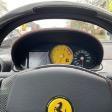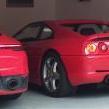-
Willkommen bei Carpassion.com
Europas großem Sportwagen-Forum.
Aktuell können Sie als Gast bereits gewisse Beiträge und Inhalte sehen.
Möchten Sie jedoch Zugang zu weiteren exklusiven Inhalten oder sich mit anderen Sportwagen-Fahrern austauschen, können Sie sich völlig kostenlos und unverbindlich bei uns neu anmelden.
-
Marktplatz
-
Vieldiskutiert
-





Empfohlene Beiträge
Schreibe eine Antwort
Du kannst jetzt einen Beitrag schreiben und dich dann später registrieren. Wenn du bereits ein Benutzerkonto hast, melde dich zuerst an.